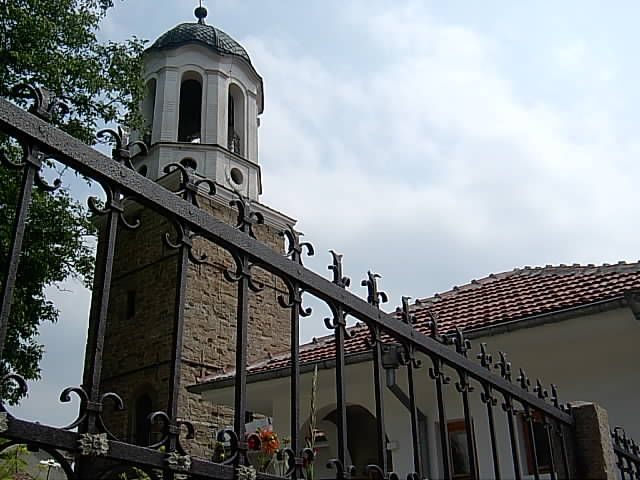

St. Nicholas Church is located in the town of Veliko Tirnovo, in the eastern neighborhood “Varusha” and was the center of enlightenment, where training was done in the Bulgarian language. The church dates from 1836 and Renaissance period.
Concerning the legitimate practice, this temple was built on the basis of governmental decree received and at the mercy Bishop Ilarion of Crete. The construction started in 1835 by the master Ivan Davdata, but it was finished by Kolyo Ficheto. After the completion of the construction, he is officially recognized as a master builder.
The church has a lower basilica with columns and wooden ceilings.
The church is without domes, with a spacious hall, which was initially open to the west and south. The east wall has three semicircular apse niches. The walls are massive, and the columns and coverage are of wooden. Emporia developed over the narthex, enters deep into the naos space with its side wings. The railing describes a complicated bent curve.
The exterior architecture of the church is carefully filled with many beautiful stones and carved details around windows and doors. The three apses are included in the whole body – below the church body. The iconostasis embodies a crown on a head and a high cross and looks by shape like the inconostatis of the Transfiguration Monastery near the town of Veliko Tirnovo. It is said that the author is Nikola Fichev, but probably the work is done probably by carvers of Tryavna town
Along the south door of the church there is a text in Greek and Bulgarian saying “St. Nicholas to intercede with the goodness of the Lord for all people. Year 1836”. It is said that Hilarion from Tirnovo city has got the buildign permit. It is assumed that this epigraphic monument, probably, has been placed in 1849, after the great earthquake.
In addition to purely religious functions, the church “Saint Nicholas”, is also known as a center of learning where formation in Bulgarian language takes place. Among the the teaching staff are distinguished professors P. Petko Nikolov, Nikola Zlatarski, Penyu Davidov and others. The School is entirely emancipated by Helhenism and became pillar of revival of the Bulgarian nation. The school has survived due to funds granted by the Esnaflii in Tirnovo.
In the temple work some of the most prominent fighters for independence of the church clergy. The chronic church attests that from 17 January 1849, in the first century of its existence, the temple was served by Stefen’s Karagiosov father in law — Krăstyu h. Nedev Momchoolu, who also is, the Questor of the school. From this period also dates the ecclesial documents that have survived well even today, being a valuable source of information.
